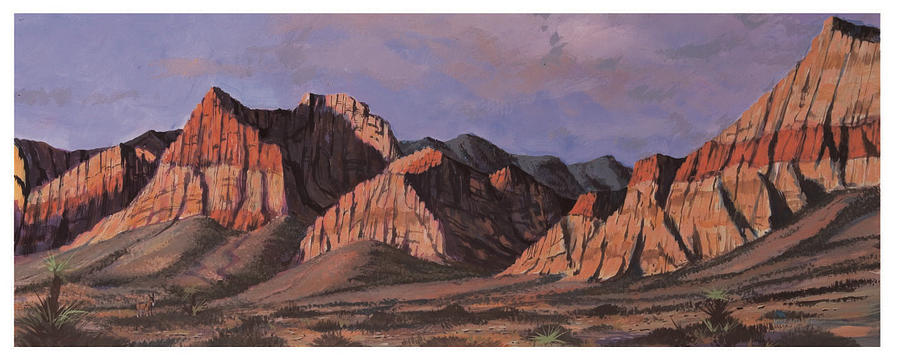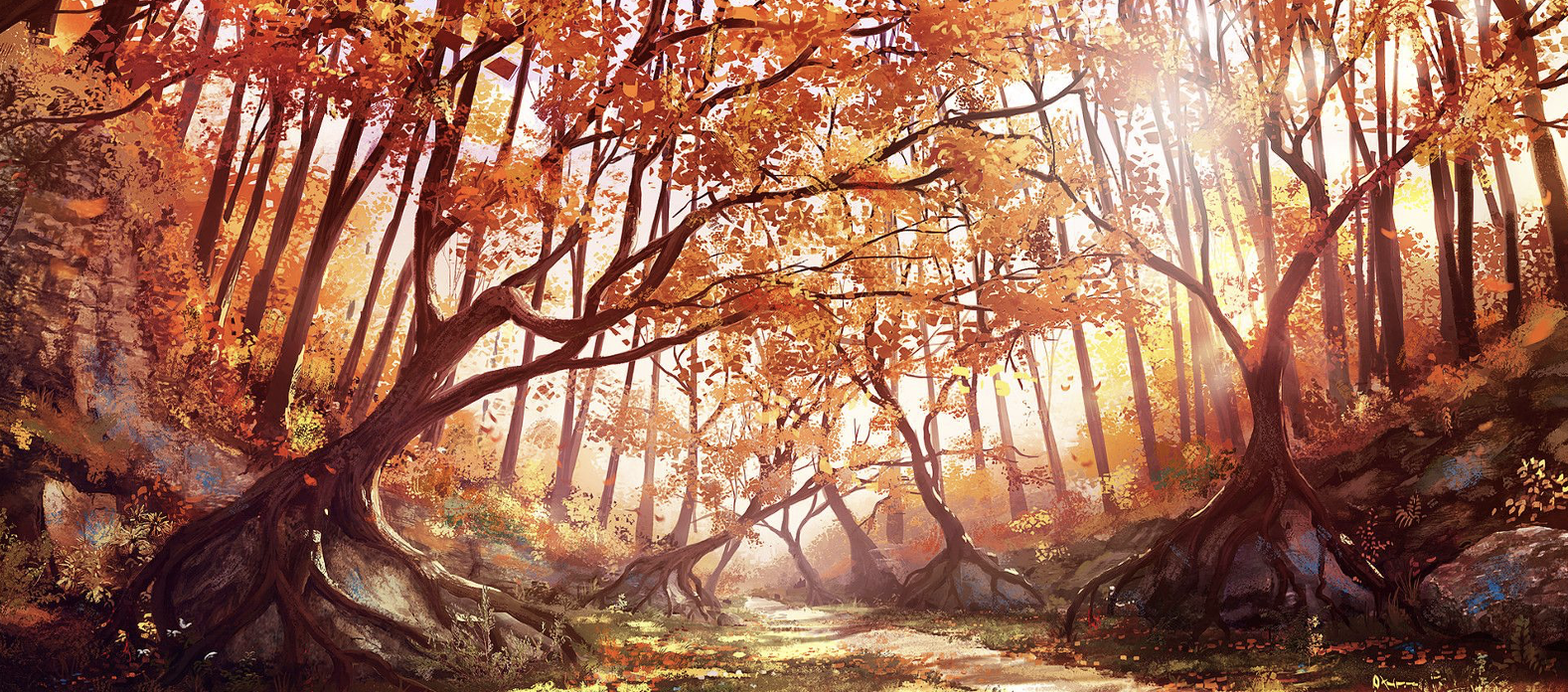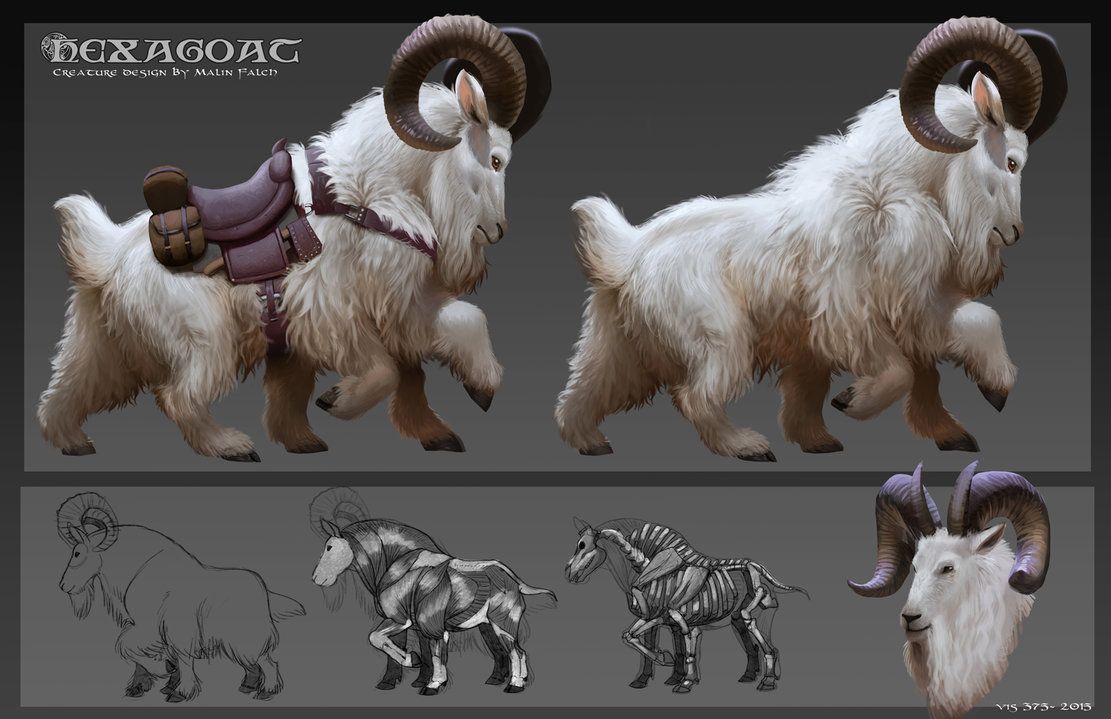Judas, Past Region of Fortune
The region of Judas was incredibly diverse on almost all facets. To the Southwest, the vegetation was more scrub-like and disparate, as the drier weather of Ragna and Lark’Hal prevailed. From the dry underbrush, massive red rock mountains rise, dividing the region of Judas from Ragna. The massive red mesas provided mineral and ore resources that facilitated trade between Judas, Ragna, and other areas of the continent. While it imposed a travel barrier, the region was well-mapped to permit travelers and traders alike to traverse its expanse. Along the southern border, these red rock mesas transitioned to dirt mounds and finally to the rolling dunes of the desert. And to the north, the mesas traded their flat tops for towering peaks as they merged with the Anwar-Dai of Elios.
Within this geographical crescent, the scrubland slowly transformed into a mixture of full grasslands and jungle. Lakes, rivers, and streams provided ample water to support more lush, fertile environments, further supported by storms and rain from the sea to the East. The jungles were full of both flora and fauna and the grasslands provided their own set of resources if not converted to pasture or agricultural fields. The coasts of the regions were gentle, with ample small bays to serve as peaceful seaports from which ships could come and go with little hindrance. Like the red rock of the region, the sands were said to have the faintest red hue such that when the sun rose or set, the beaches took on an almost rose-gold hue. Many would travel from across the continent to see the beaches and marvel at the glittering City of Fortune nearby.
Basic History
In the early days of the continent and the pantheon, the region of Judas featured practically no permanent settlements. Instead, large swathes of open land were designated as “caravan stopping points”, where multiple caravans would stop to trade. While stopped, they would often construct large tent cities and other temporary structures. One of two exceptions this tradition was a few, small settlements primarily devoted to agriculture in the regions. Oftentimes, these permanent settlements included a caravan stopping point and often attracted large caravans in the spring and fall. The other exception was the Temple of Judas, which housed those that chose to religiously devote themselves to the God of Fortune. As a merchant god, travel, commerce, and trade were considered ways to devote oneself to Judas. Thus, those within the Temple were often referred to as the “Lords and Ladies of Luck” as they tended to worship the God of Fortune as a god of Luck and good fortune.
Eventually, over the course of centuries, the temporary “city” constructed by the roving caravans slowly shifted to a semi-permanent structure, centered around the Temple. Some of the first buildings included an enclosed market space (to shield merchants and wares from the rain), a bar and inn, a seaport (though crude and simple), and a blacksmith and carpentry workshop (to repair all the broken carts and equipment passing through). After that, the nearby shepherds began to shift their herds to the nearby pastures, offering their services tending to the goats and horses of the traveling merchants and perhaps buying and selling as well. The Temple slowly began to flourish during this time and a prominent plaza was built in front of the Temple – though the construction took decades. It featured a wishing well: a tough of Fortune for all who passed through.
The City of Fortune only became a city in true with the arrival of Judas’ antagonist: an eldritch monstrosity that would come to be known as the god of isolation and misfortune. While a multitude of caravans were stopped at the Temple for trade and rest, a large shadow emerged on the horizon, eerily illuminated in the red sun. A moving mountain built of red rock and supported by 6 spider legs composed of the same red rock lumbered closer. People began to panic as it drew near: would it crush the Temple? Instead, the monstrosity stopped and dropped… destroying a pivotal trade lane and blocking one entrance to the City of Fortune. The force of its settling sent a shockwave through the ground, becoming a rumbling earthquake as it approached the city. A portion of the Temple collapsed and many of the permanent structures suffered damage. Although not fully isolated, many of those who relied on the now blocked trade lane chose to remain. It was those who stayed behind that ended up building homes, rebuilding the Temple on top of the Old, and expanding the central square – adding embellishments to the wishing well.
After another century, the God of Isolation was finally removed from its resting place, drawn elsewhere to bring misfortune. With its departure, the City of Fortune continued to develop, becoming the first “true city” on the continent. In terms of population, wealth, and advancement, the City of Fortune was ahead of Eredet by anywhere between 100 to 500 years. Despite a more permanent settlement, the way of Judas was still the way of the merchant. It is no surprise then that the City of Fortune developed as a Plutocracy, though counterbalanced by both democratic components and the power and religious authority of the Temple of Judas. As it developed, the city expanded outward from the Temple. With the accumulated wealth, the Temple of Judas was eventually rebuilt entirely on top of the Old Temple and it was also expanded to serve as a community center and governmental building for the 13 Guilds.
In 502 YAR, the formation of the High Dremoran Council was announced. The City of Fortune had hardly considered Eredet a threat or a rival, but they had taken offence when Eredet was deemed the capital of the continent, but did not have any representative from Judas (and many other regions they regularly traded with for that matter). They sent Behrooz Faust to represent them. The selection shocked many people, but it was a perfectly calculated decision. Faust was well-known for his ill luck and so it was a great benefit to get him out of the city. Perhaps they hoped Faust would bring a bit of misfortunate to Eredet, as recompense for living the City of Fortune out of Eredet affairs for so long.
For the next 500 years, the City of Fortune continued to grow and prosper. Despite accruing significant wealth, the city was also known for its generosity and developed and retained favorable relationships with many other regions. The Elian people were respected and welcomed into the City of Fortune. Their wares were seen as luxury goods and artisan products to be bought, sold, and traded with high regard, especially after Tuari, the Elian hero bested Judas’ best archer. Warriors of Ragna were welcomed, and local gladiatorial tournaments were hosted in the small Coliseum constructed in the city. Varoonan merchants always came and went through the port, bringing goods from the South and from the Neg’Varos Bay. Above all, however, the City of Fortune was most closely tied with the Heart of the Desert. It was said that Judas and Lark were some of the closest among the gods, so why wouldn’t the cities be some of the closest? The City of Fortune’s generosity extended the most to Lark’hal, where they funded the arts, commissioned pieces, and facilitated trade in the middle of the Dune Sea.
Politics
Once the City of Fortune was founded, the region was primarily controlled by a plutocracy, counter balanced by a theocratic body and a democratic body. However, formal political governance was only applied to the City of Fortune, while local governance and local policies/practices reigned supreme in the less developed areas of the region.
The City of Fortune's governance was primary overseen by the 13 Guilds. The leaders of each made up the plutocratic branch of the government. They generally convened as a council or committee to address new laws, approve construction projects, and resolve concerns. These leaders were, in turn, subject to the desires and opinions of the democratic body that was the members of their Guild. While not a formal vote, guild leadership could be overturned if their leader was failing to adequately represent the Guild as a whole. Guild membership, in turn, was purposefully kept loose so that those on the lower end of the economic scale could still participate, ensuring their voice was heard. Further, the 13 Guilds had to gain approval from the Lords and Ladies of Luck, namely the High Priest or Priestess or their representative body. In some cases, the theocratic component could be Judas himself, but it was more commonly a member of his clergy.
Economy
The City of Fortune was a trade powerhouse with luck always on their side – at least economically. From the beginning, the City of Fortune prioritized infrastructure, allowing for the easy movement of goods within and beyond their region. They additionally ensured protections were in place for their regional resources and invested heavily in maximizing production with the least amount of harm. While not perfect, the region of Judas managed to retain much of its natural landscape even as the City of Fortune grew in physical size, population, and demand.
The City of Fortune capitalized on the artisan power of the Heart of the Desert, the flight capabilities of the Elian people, and the various resources available from nearby regions such as Ragna. By protecting their lands, Judas did not need to import food from Oshiv’Ran, removing their reliance on the “bread basket” of the continent. Ultimately, the region specialized in the movement of goods and merchants were often hired from Judas to move goods for other cities and regions. Beyond these general services, the region of Judas produced a variety of unique products, such as the Judean goat, often traded to Caliban or to travel the Elian mountains due to its strength and sure-footed nature.
People
The region of Judas was a melting pot of races, though humans existed in relatively higher numbers. This was a city where cultures and customs blended, provided it could exist within the broader concept of a “merchant culture”. Those who moved to the City of Fortune found it easy to integrate their religious and personal beliefs into day-to-day life. The City of Fortune preferred to have a melting pot of culture as it allowed for them to cater to a larger clientele base.
While the Heart of the Desert was also a melting pot for various races, there is still a distinct line between the races. By contrast, the region of Judas was well known for how common “half-races” were. Part of this was due to the common occurrence of arranged marriages on the premise of economic gain as opposed to cultural, social, or religious gain. Thus, this often meant marrying someone beyond your smaller cultural or racial unit. While Judas himself was said to appear human, the variety in his children indicated that perhaps Judas himself was of mixed heritage or showed his approval of such a practice in his City by bestowing that upon his children.
In the broader region, residents tended to live more modest, rural lives. However, the City of Fortune made sure to upkeep all roads – even in remote areas – and provided various stopping points where locals could secure cheap transportation. Within the City itself, it is said that the poorest could move to another city and be among the lower-middle class at worst.
Religion
As a God of Merchants, Judas was often given offerings before journeys and long voyages. Judas was also honored as a God of Luck and Fortune. Wishing wells were commonly arranged throughout the city. While they provided water, they were also said to grant wishes in some capacity. Beyond these small religious “habits”, Judas was viewed more as a “enhanced” humanoid. To the people of Judas, their god was one of them – with some conditions applied.
It was well known that Judas weakened when he travelled too far beyond his city. Thus, the people viewed themselves as extensions of Judas, traveling beyond the city to represent their region and their deity himself. Thus, it was very common for almost everyone to wear some form of iconography for the God of Fortune, such as a four-leaf clover, wishing bone, or gold coin on a necklace, bracelet, earring, or even as a tattoo somewhere generally visible.
RUINED SETTLEMENT
Between 1005 YAR and 1035 YAR
Type
State
Included Locations
Jungles & Forests
Judean Goat
God of Isolation and Misfortune
Erdene, Usurper and Daughter of Judas
The 13 Guilds oversaw the general day-to-day affairs of the City of Fortune. They served as the governing body since their formulation to the City of Fortune’s destruction, except for one brief period. Judas, as a deity, was well known for actively moving amidst his people and often served in a position of political and/or religious authority. However, Judas adamantly refused to convert the city into a theocracy. That did not stop the people from supporting such an idea. Nor did it stop some from taking advantage of such an opportunity. Judas was also known to marry and bare children – perhaps the most prolific of the pantheon in terms of demi-god children. Erdene was the daughter of Judas and one of the Ladies of Luck. She, more than any of Judas’ other children, truly took to heart the desire of the people to have Judas rule. When she came of age, she rallied the people and acquired sufficient support to “gently” overthrow the 13 Guilds. For five years, the Guilds simmer and tolerated the change in rule, waiting for Judas to do something about his “out-of-line” daughter. The God of Fortune, however, did not step in. In fact, all the Guilds really needed was time. In her 5 years, Erdene proved that… divine blood is insufficient to make a good ruler. Another 3 years and the Guilds were back in control. Eredene’s fate varies across accounts. Some say she married one of the Guild leaders. Others claim that she entered the clergy to her father in some attempt to continue in the political sphere. And still others claim that she was executed
The Lost History
In the year 999 YAR, Judas’ Beloved was found in the region of Caliban, serving as the High Oracle. Judas had gone to visit his more reclusive brother and had happened to catch sight of the High Oracle from a distance. Still, even such a glance is enough to know. Caliban could not deny his brother. The young Oracle travelled across the continent, arriving in the City of Fortune and becoming a Lady of Luck. She was, shortly after her arrival, also named the Oracle in the East. For the first time, Fortune and Fate entered the same playing field. A few years later, Dysis became the High Priestess. It was during her “reign” that Judas’ son (from his most recent late wife), Kostas fell in love with and attempted to woo a member of the Bhediya people, Soyolmaa. The Bhediya were the last surviving relic of the nomadic lifestyle of the ancient past. They travelled much of the region, but often drifted into the region of Ragna and into the Dune Sea to the South. While the Bhediya would make camp every few years outside the City of Fortune, they rarely lingered long. Thus, it was quite the historic event when Kostas and Soyolmaa were married in the city of Fortune.
They say that they wedding was a pivotal moment in history. Although there are no records of this any longer, it was this wedding that set Judas onto a new path. Others will claim, however, that it was the rejection by his Beloved that drove him down a darker path. Regardless, Judas consorted with The Void. If his initial intention was expansion motivated by Greed, it was in part replaced by self-preservation when he learned of what lied beyond. It was Judas who invited The Void to the world and requested that it annihilate all remaining threat to the continent. When the pantheon was not convinced of such a task, the Dread King’s War began. The war saw multiple regions ravaged: Groen’s Wood in Oshiv’Ran, the city of Varoona Proper, the capital of Eredet, and the lands of Lark’Hal, Ragna, and southern Elios. They say it was Soyolmaa who betrayed Judas. Others say Soyolmaa was acting on the orders of Dysis. Regardless, Soyomaa rallied the gods and their champions against Judas and they attacked the City of Fortune. Supposedly, no one who fought in that battle survived.
Additional Religion
- Varoona was often honored before sea voyages
- Ragna was often honored by guards and caravan leaders to inspire bravery and courage
- Lark was very commonly worshipped in the City of Fortune. The Art & Culture Guild house included a modest Temple to the God of Muses
- Elis was honored by the Elian people within the City and cultural spaces were allocated to them









Comments